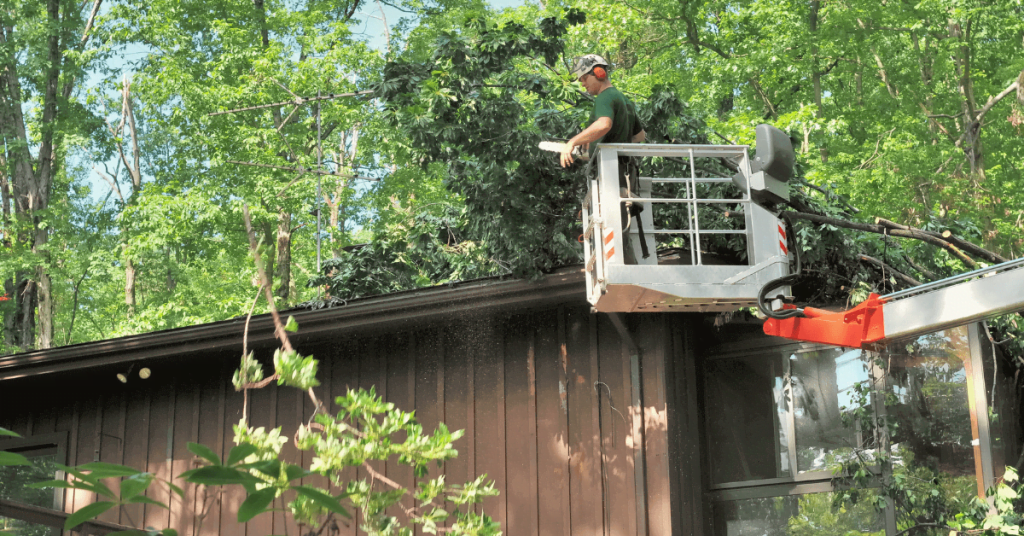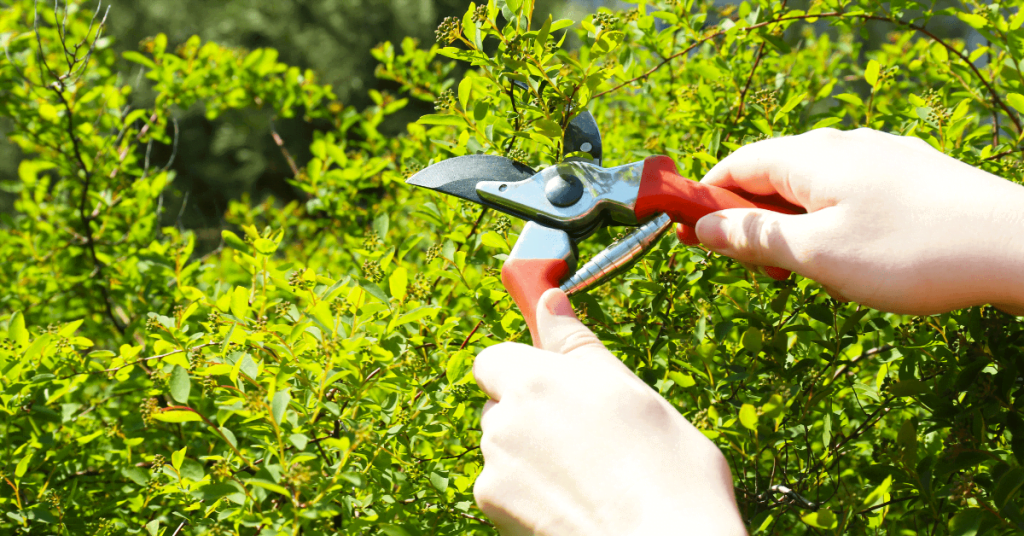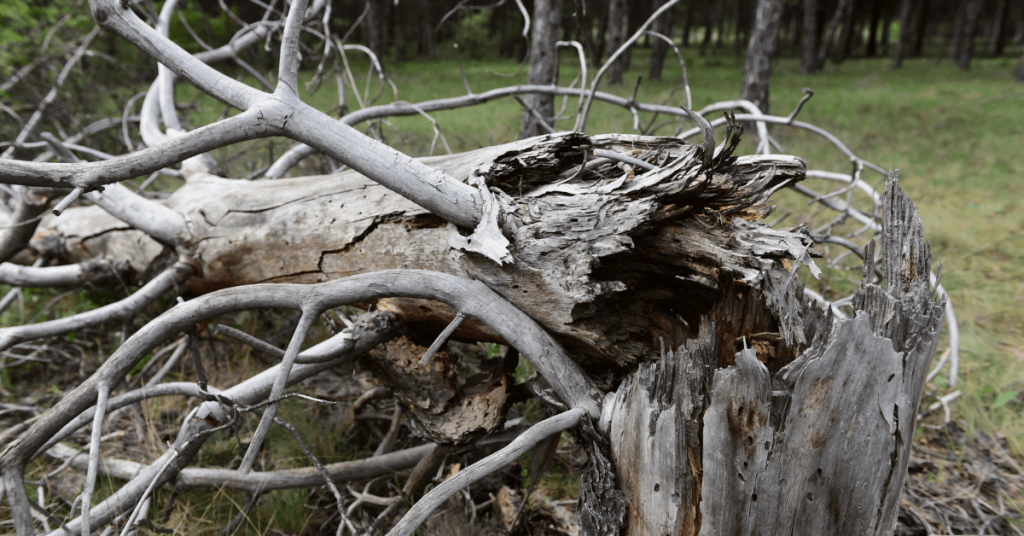Strong storms can do significant damage to homes, businesses and properties. From fallen trees to uprooted plant life, you must take steps to ensure the safety of your property once the winds have finally died down. One way to help protect what’s left standing and minimize any future harm is through tree removal services.
By understanding how this specialty service may benefit you after a storm – both in terms of immediate needs and long-term strategies – you can be better prepared for various types of weather events so your family and belongings are safer when the clouds move away.
How to recognize when a tree has been damaged during a storm?
When a strong storm strikes, it can cause damage to trees that may not be immediately visible. After high winds, heavy rain and extreme temperatures have passed through the area, it is important to inspect your property for signs of tree damage.
Signs of trouble include broken branches or limbs, cracks in the tree trunk, leaning or uprooted trees and compromised root systems. If any of these signs are present, it is important to call for professional tree removal services as soon as possible to protect your property and the safety of others.
How Tree Removal Can Help After Storms?
Tree removal can be a critical step in the aftermath of storms. Storms often cause trees to become damaged, uprooted or weakened and they may pose a hazard to people and property if left alone. Removing fallen trees or removing weakened branches from existing trees is essential for safety as well as preventing further damage from occurring.
Here are some tips on how you can go about dealing with trees after a storm:
- Survey the damage: Before taking any action, it’s important to assess the damage caused by the storm. Make sure you survey your entire property thoroughly and take note of any damaged or uprooted trees, as well as any branches that may have been weakened.
- Call in a professional: If you feel that the damage could be too great for you to handle yourself, it’s best to call in an experienced tree removal service. They will have the proper equipment and expertise needed to make sure the job is done safely and correctly.
- Clean up debris: After the tree removal process is complete, make sure you clear away all of the debris from your property. This includes branches, leaves and even uprooted trees. This will help to prevent any further damage to your property by preventing the spread of disease or pests.
- Take preventative measures: You can also take some steps yourself to help prevent future damage from occurring. Trim any branches that may have been weakened and inspect your trees regularly for signs of weakness or damage.
Tree removal can be an essential step in restoring safety and order to your property after a storm. Be sure to assess the situation carefully, call in professionals if needed, clear away debris and take preventative measures to ensure that future damage is avoided. With the right steps, your property can be back to normal in no time!
Steps to take to ensure safety when removing damaged trees
1. Assess the risks involved:
Determine whether it is safe to remove the damaged trees on your own or if you need professional help. Consider factors such as size and type of tree, proximity to power lines, buildings and other obstacles.
2. Gather the necessary safety gear:
Depending on the situation, you may need to wear protective eyewear, gloves and other protective clothing, a face mask or respirator and steel-toed boots.
3. Cut away any branches that are in danger of falling:
Before attempting to remove the tree, it is important to reduce the risk of injury by cutting away any large branches that may be unstable or may fall during the removal process.
4. Use appropriate tools for the job:
Make sure you are equipped with the right tools for the job, such as a chainsaw, ladder and rigging ropes. If you do not have these items available, consider hiring a professional tree service that can provide them.
5. Be aware of your surroundings:
Pay close attention to your environment and the people around you. If possible, clear the area of any bystanders or non-essential personnel before beginning work.
6. Follow proper safety procedures:
Always remain mindful of potential hazards and take steps to ensure everyone’s safety, such as using a spotter when necessary, securing ropes when lifting large branches, or using a safety harness when working at heights.
7. Clean up the area afterward:
Once the tree has been removed, thoroughly clean up the area to remove any debris or hazards that may be left behind. Depending on the situation, you may need to seek assistance from professionals to help with this process.
8. Dispose of the tree properly:
Before disposing of the tree, make sure you comply with any local laws or regulations that may apply to your situation. Keep in mind that some types of wood can be recycled or repurposed, so try to take advantage of these opportunities if available.
9. Take care of yourself:
After the job is complete, take a few moments to reflect on the safety measures you took and ensure that you are doing all you can to stay safe while working with trees. Drink plenty of water, get enough rest and seek medical attention if needed.
Safety should be at the forefront of any tree removal job. By following these steps, you can help ensure that the process is completed safely and effectively. If possible, seek professional assistance from experienced arborists whenever necessary to ensure the job is done right.
How removing damaged trees can improve the overall health of a landscape?
Removing damaged trees can have a positive impact on the overall health of a landscape. By taking out dead, diseased, or weak trees, you can help reduce the risk of decay and contamination of other nearby plants.
This increases air circulation and reduces competition for resources such as water and sunlight. Removing damaged trees also gives healthier, more robust trees the chance to flourish, creating a healthier landscape and providing greater benefits such as increased wildlife habitat.
Furthermore, removing damaged trees clears up space in your landscape and opens opportunities for other plantings or landscaping projects.
By taking appropriate steps to remove damaged trees from your landscape, you can help improve its overall health while also making room for exciting new projects.
Wrap Up
Tree removal is one of the best ways to protect your property and landscape after a storm. Not only will it remove any potential hazards, but it can also help improve the curb appeal of your home or business. In addition, tree removal can also be used to prevent future damage to your property.
If you have questions about tree removal or need assistance with a project, contact a professional tree service. It is important to follow safety precautions and use the appropriate



